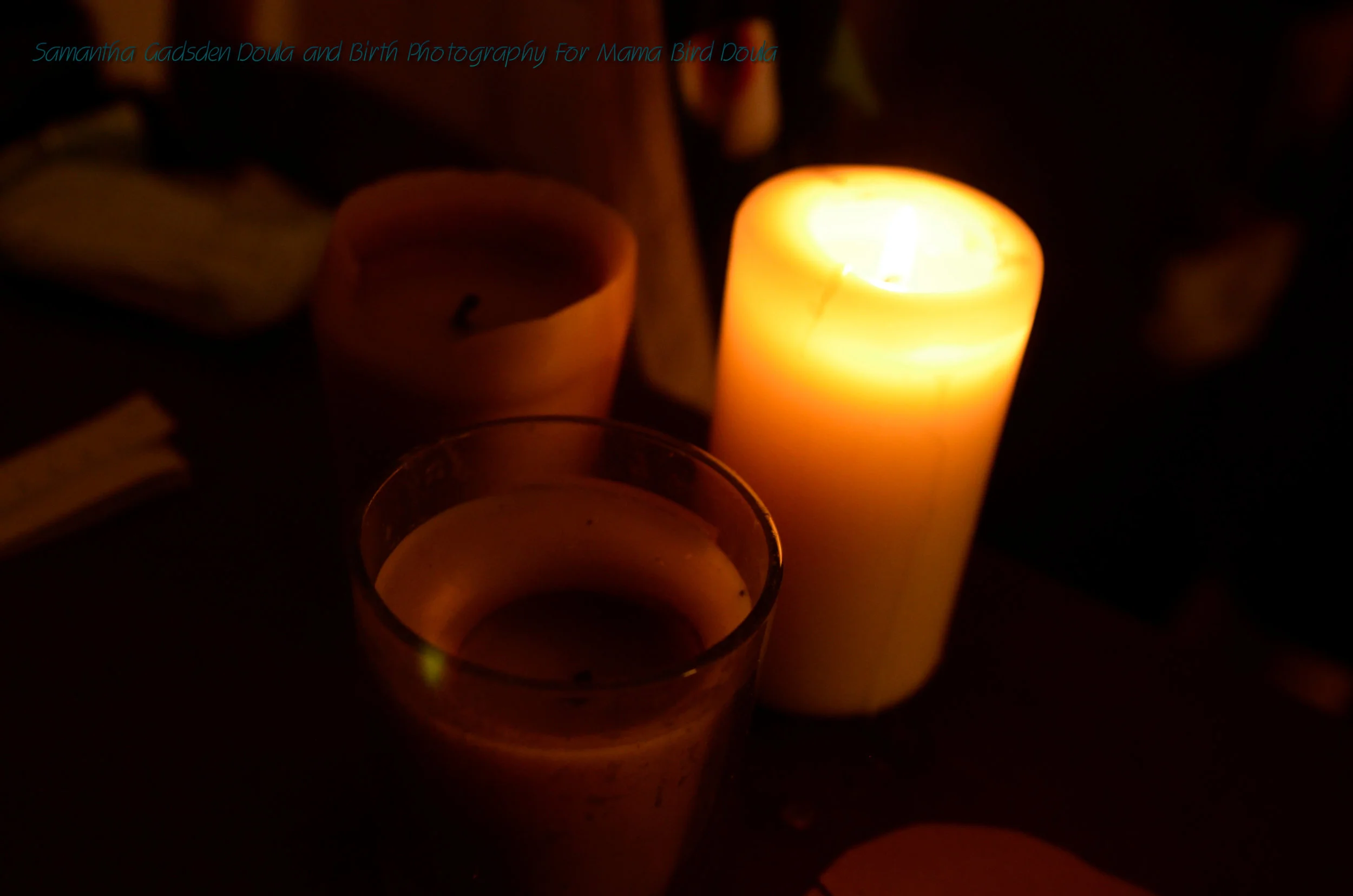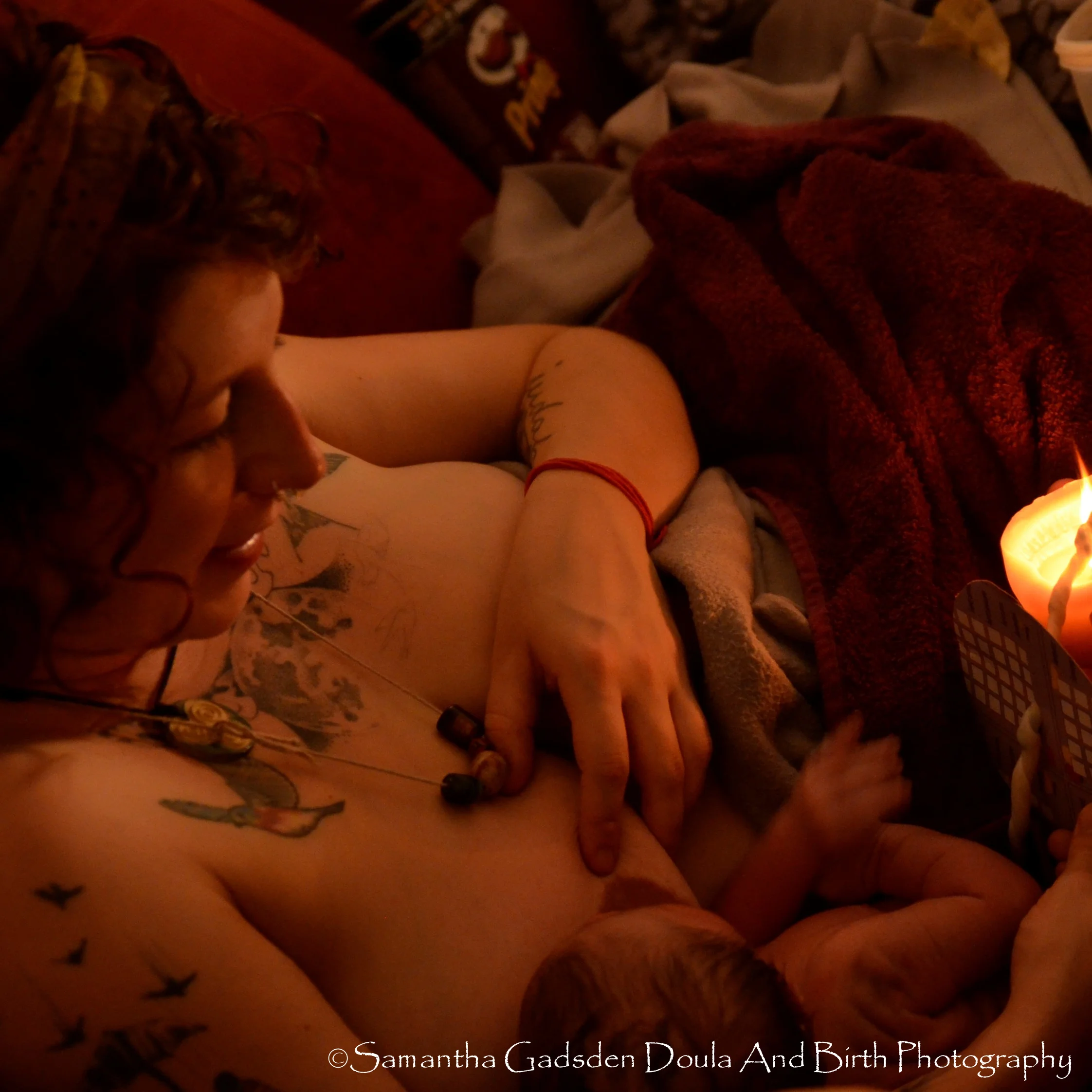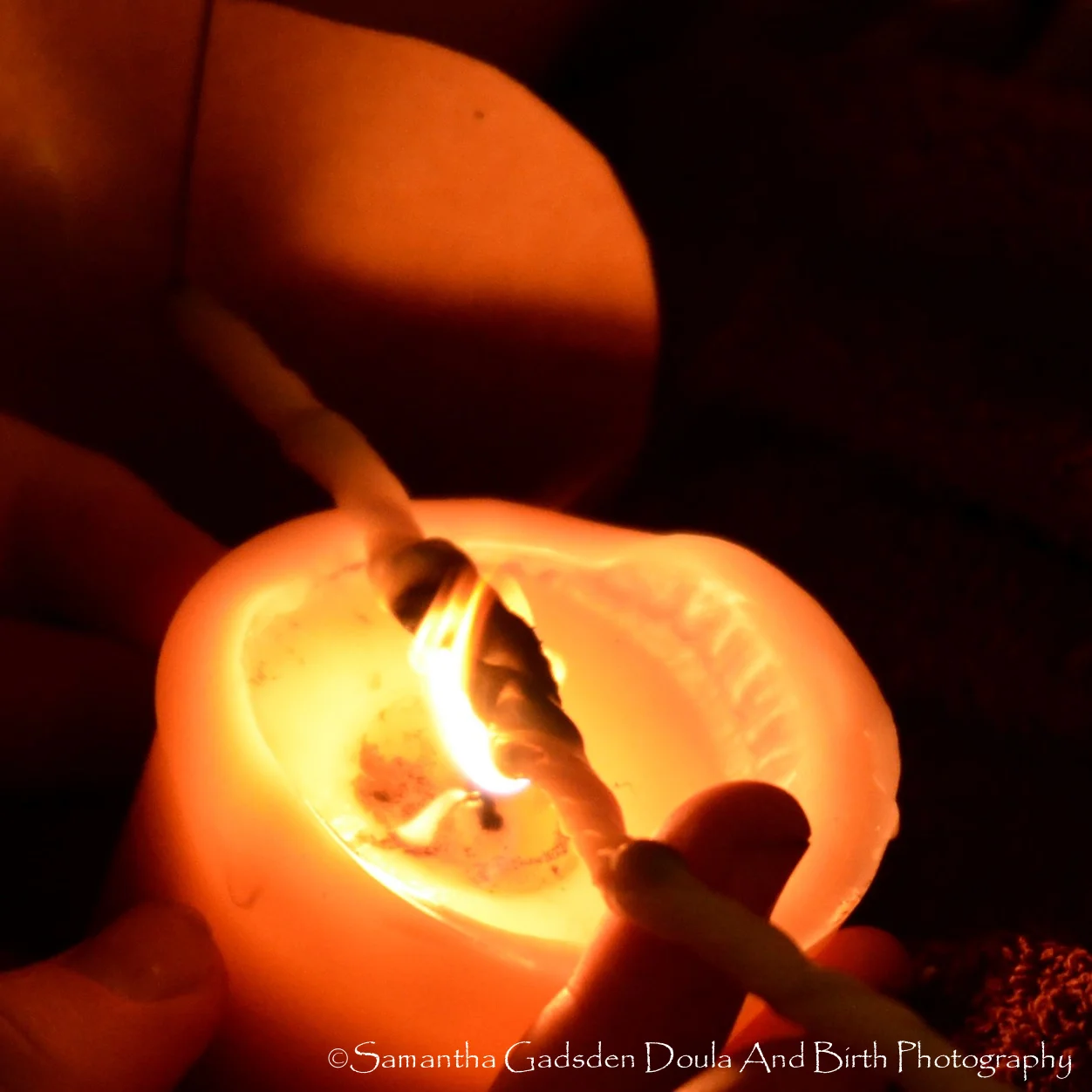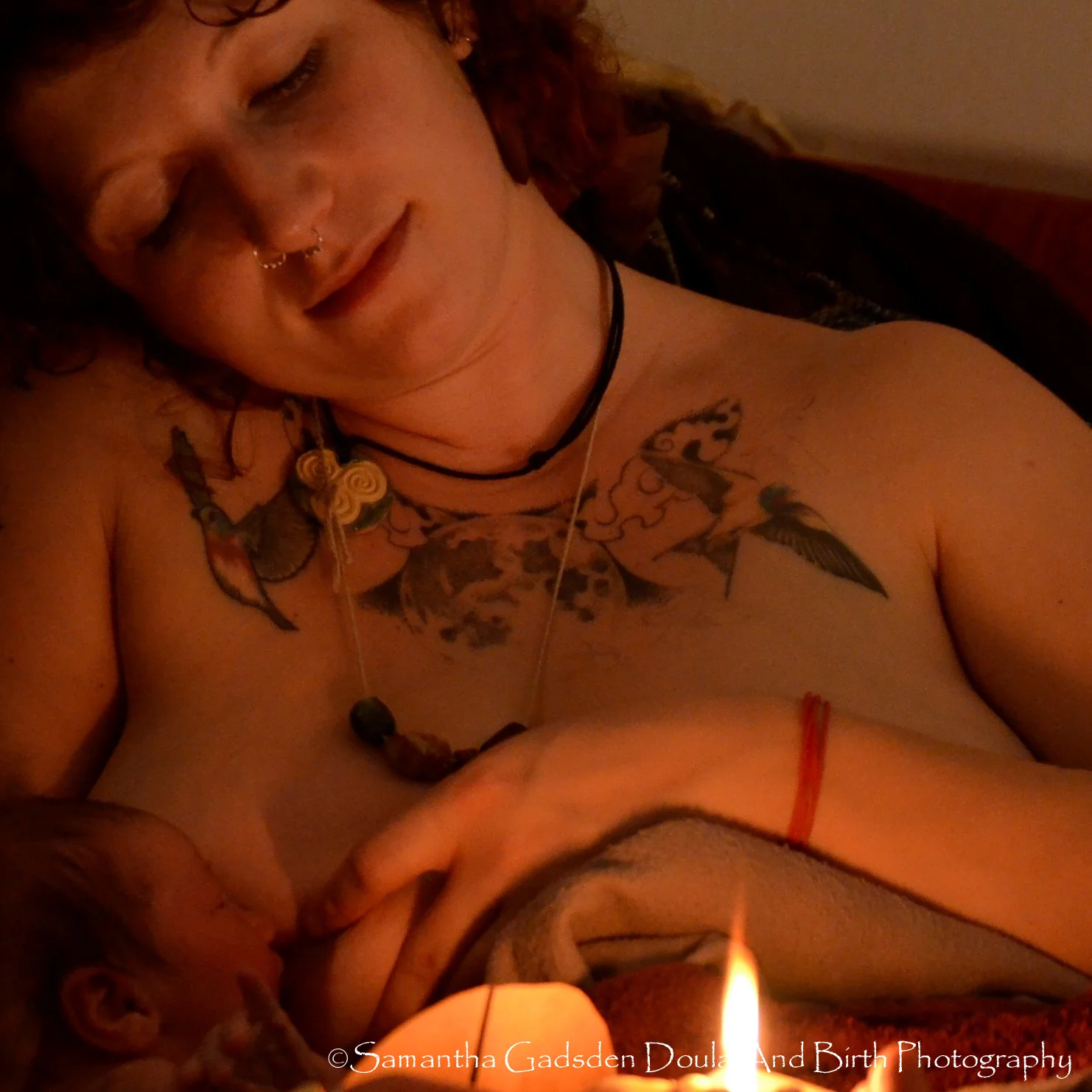Cord Burning: Reclaiming the Sacred Third Stage
When we decided to freebirth, we had to make a decision as to how we would separate Autumn-Violet from her placenta. In most hospital or home births, that is done with clamps and scissors, or maybe a cord tie, which are gaining in popularity.
Having recently trained as an IPEN placenta encapsulator, my fascination with the placenta had grown and I became very interested in the concept of lotus birth. The placenta is considered in many cultures to be the baby's twin, its other self, and the harsh separation with scissors can come as a shock to the baby as it is cut off from its blood, oxygen, nutrient supply and constant companion. Particularly if the one separating them is a stranger, or even the father of the baby. The baby may even experience this as violent.
Although I loved the idea of lotus birth, that is, leaving baby and placenta attached until the cord naturally falls off, I also wanted to use my placenta for remedies. That means it must be chilled very soon after birth. We decided that cord burning was a good compromise, a gentle and gradual way of separating baby and placenta, while within the time limits of good food hygiene to make sure the placenta was fit for consumption.
Cord burning is essential in some countries where the cleanliness of tools cannot be guaranteed. It is a hygienic, accessible way for all. In old China they believed burning the cord was warming and helped to move "Qi" into the baby. Anecdotally, this is said to help birth recovery for both mum and baby and boost milk production. It can also show visible improvement in babies with low APGAR scores and get them to "pink up". There is no need for a clamp as the umbilical cord is clean and cauterised by the flame. I decided to write "lotus birth" on our birth plan to ensure we could do it in private.
In preparation for this ritual, Autumn-Violet's father made candles himself from stubs of the candles we light while in the bath. He melted them down and added essential oils, then reset them. He liked the idea of creating the candles that would separate the baby from the placenta and having a greater involvement in the birth experience.
After a stressful birthing of the placenta that took two hours to come, I was relieved to return to the sofa with my baby and her placenta. We had a midwife to check the placenta and perineum, and after she left we decided it was time for Autumn-Violet to say goodbye to her womb companion.
Autumn-Violet's father had made a cardboard shield from a cereal box a few days prior (circle with a slit for the cord) and we used this to create a distance between the baby and the flame. She latched on for a feed and her father held the candle to the white umbilical cord. The flame gently crackled and began to blacken the umbilical cord as we sat watching the progress. The room was dark, quiet and intimate and we watched as the cord twisted and burned slowly in response to the fire. Eventually there was a louder crackle and Autumn-Violet gave a wriggle as she was fully born into this world.
I am so grateful to Autumn-Violet's father for taking charge during this special process as I really wanted to experience it, but was nervous of getting it wrong. He approached the whole thing with real confidence and assurance and that's what made it feel so powerful to me. I feel so moved that Autumn-Violet was gently separated from her placenta by the confident energy of her father taking charge.
I would definitely choose this method for the third stage again, were I to give birth again. It was a mesmerising, calming event that brought the birth to a beautiful end. If I had to estimate I would say it took ten minutes. Her cord stump was pointed and black at the end, and although longer than I would have liked for nappy changes, dried and fell off in four days which is a testament to how clean and effective this method is.





